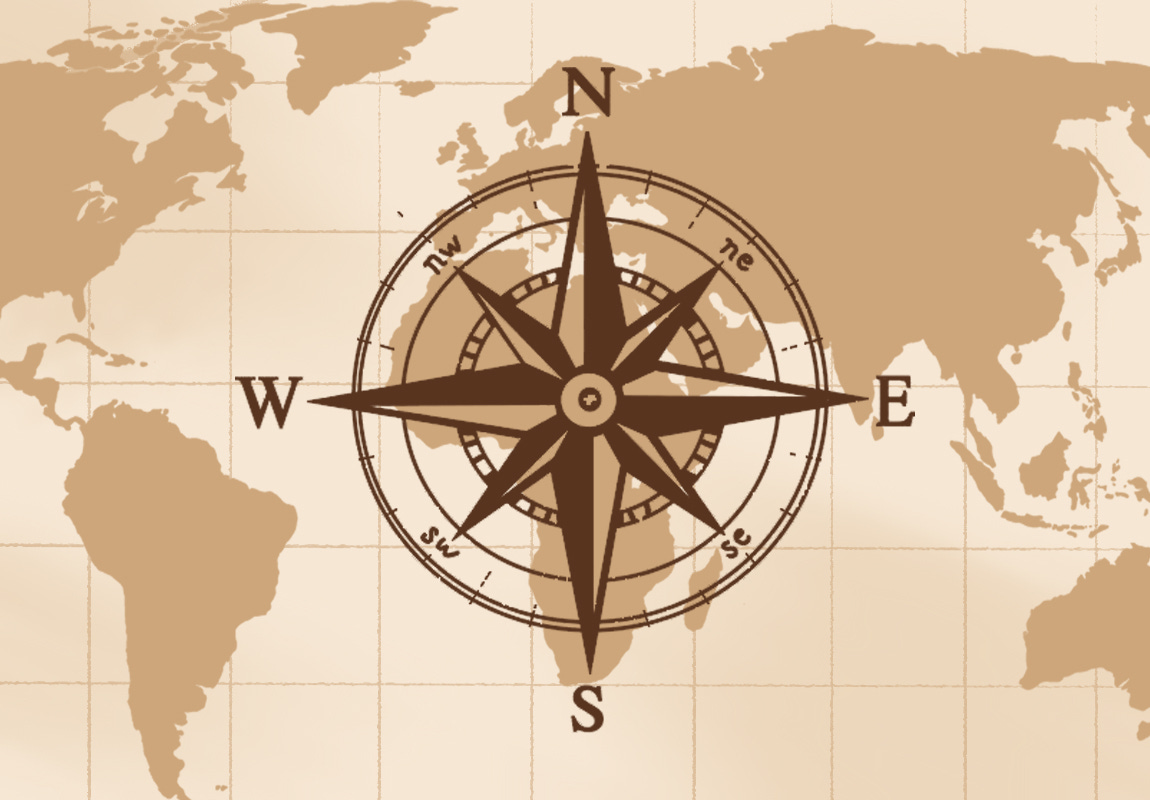Compass: The Invention that Revolutionised Navigation
When we list the inventions that changed the world, the compass stands out with its significant role. From a fortune-telling instrument, it became one of the greatest inventions that navigated human history. It revolutionised sea navigation and directed routes for sailors to unknown shores. Today's GPS navigation is an advanced version of the early compasses. So, when was the compass invented? Who is behind the invention of the compass? Come, let's find out the answers to these questions.
A compass is an instrument consisting of a magnetised needle that lines up with the Earth's magnetic field, displaying the magnetic north and magnetic south when allowed to rotate freely. The exact origin of the principles behind magnetic compasses and the period in which it was first invented is still an ongoing debate among historians. Though the Greeks are said to have identified the principles of magnetism, it's generally believed that the Chinese were the first to invent the magnetic compass.
The Han Dynasty rule, which lasted from the 2nd century BCE to the 2nd century CE, is considered the period in which compasses were first made. Naturally seen magnets, lodestone or magnetite ore, were used in making compasses. Once rubbed into the lodestone, a metal nail becomes magnetised and capable of being used as a compass needle. But, ironically, compasses were not initially used for navigation but for divination or fortune-telling. Later, Chinese scientists observed that needles cooled from red heat and held in the north-south orientation would become magnetic. The needle showed the north-south directions when allowed to rotate freely. Chinese compasses were mainly of two types: a wet compass that floated in the water and a dry compass suspended from a silk thread or placed upon a pointed shaft. South Pointer or South Governor and South-pointing fish were the compass models that became popular then.
Sailors used compasses as a backup when the sun, stars, or other landmarks were not visible.
By the 7th century CE, the time of the Tang Dynasty, compasses got refined and became portable, which helped in navigation. However, it was only by the 11th century that compasses were used in sea navigation. The Europeans followed in the 12th century. Historians believe Europeans might have developed compasses individually through the early Greek knowledge of magnetism, as almost no contact existed between the east and the west. It is also said that the Europeans received the idea of the compass from the Middle East, which had a warm relationship with China.
Sailors used compasses as a backup when the sun, stars, or other landmarks were not visible. Eventually, it became more reliable and crucial for trade and exploration ships. However, it was only by the 15th century the explorers realised that the north displayed by a compass was not the same as Earth's true geographic north. Instead, it pointed to the Earth's magnetic north, which is not a fixed point. This discrepancy between magnetic and true geographic north is called variation or magnetic declination. It varies depending on the location. When using magnetic compasses at the Equator, the discrepancy is not substantial. But it is much more significant towards the North and South Poles and can take someone many kilometres off-course. On understanding the magnetic declination, sailors were able to calculate the geographical north using a compass, which improved the precision of navigation.
Years passed, and when iron and steel ships replaced wooden ones, a new problem arose. The ship's magnetism affected compass readings, which came to be known as deviation. Adaptations were made to reduce the deviation, such as placing soft iron balls called Kelvin spheres and bar magnets called Flinders bars near the compass to improve the precision. The same issue appeared while compasses were used in aeroplanes. With the development of technology, compasses capable of dealing with deviation factors were made.
By the early 20th century, gyrocompass was invented, which uses a spinning gyroscope, instead of the Earth's magnetism, to follow the Earth's axis of rotation to point to the true geographical north. Variation or deviation doesn't affect these compasses as they do not rely on magnets. With the arrival of the global positioning system (GPS), compasses were mostly relaced. Despite GPS developments, the compass remains a valuable tool, and many planes and ships still utilise highly advanced compasses as navigational devices.


